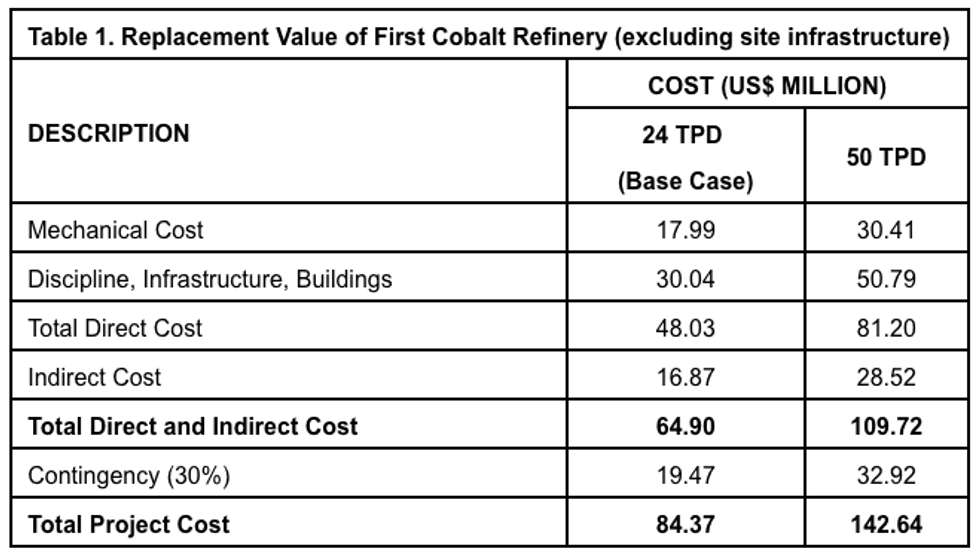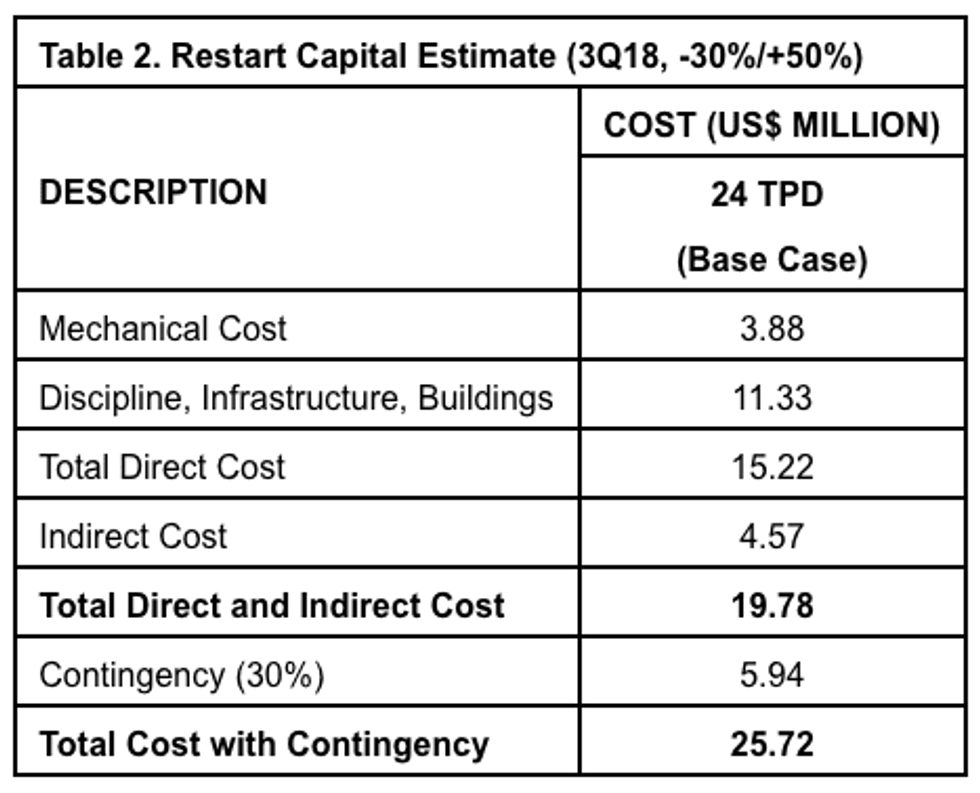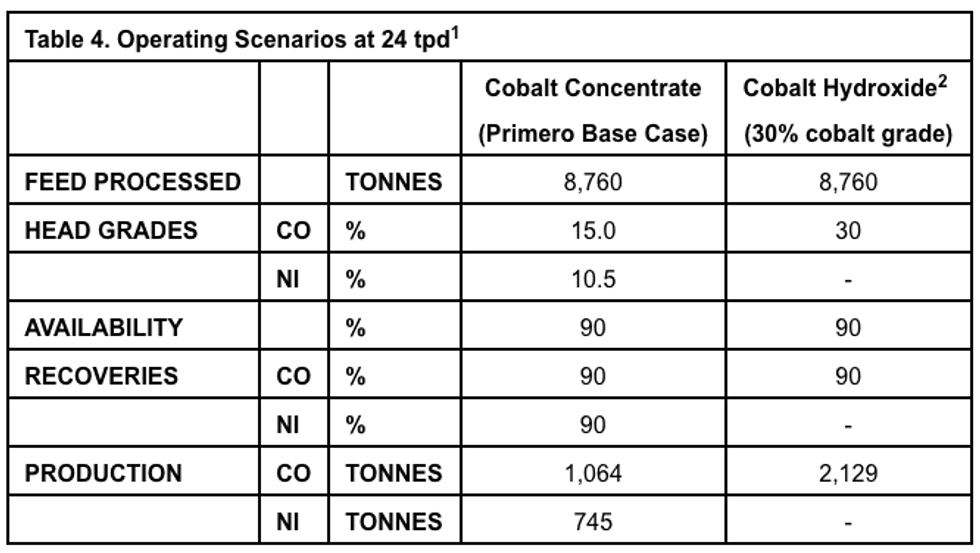First Cobalt Produces Battery Grade Cobalt Sulfate
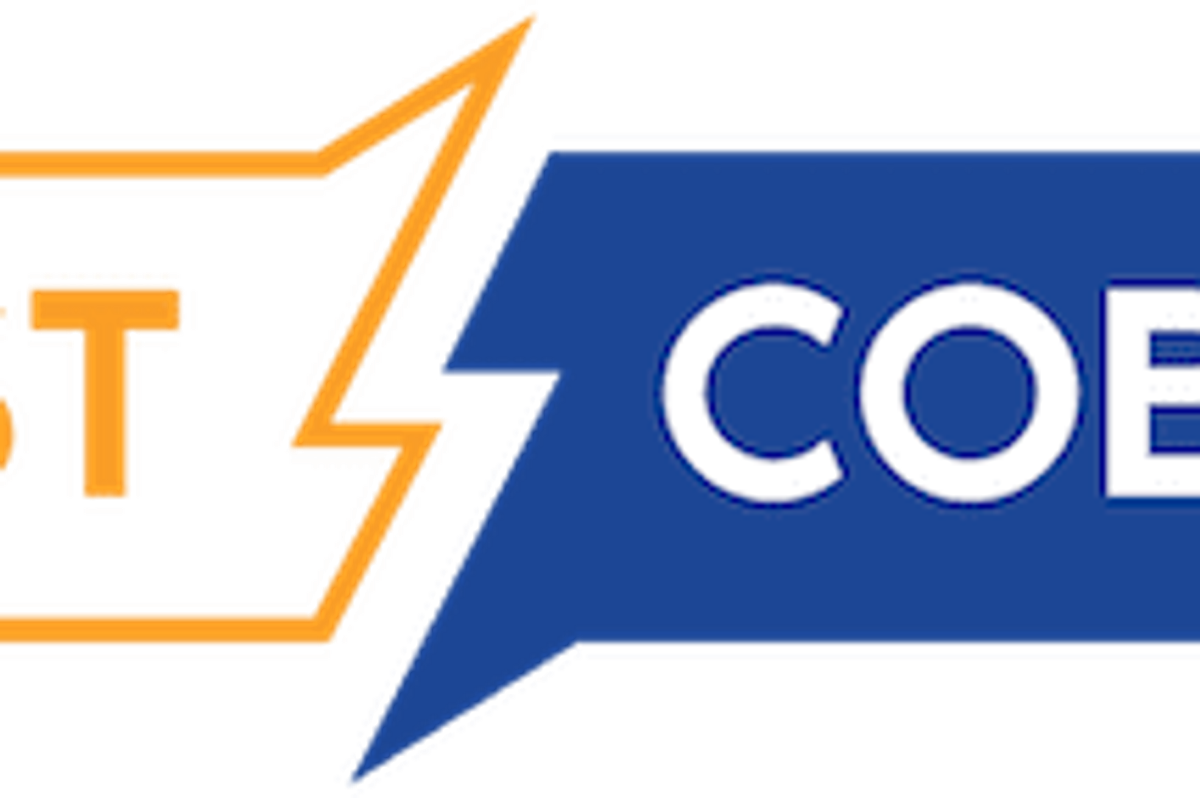
First Cobalt Corp. (TSXV:FCC)(ASX:FCC)(OTCQX:FTSSF) (the “Company”) today announced it has successfully produced a battery grade cobalt sulfate using the First Cobalt Refinery flowsheet.
First Cobalt Corp. (TSXV:FCC)(ASX:FCC)(OTCQX:FTSSF) (the “Company”) today announced it has successfully produced a battery grade cobalt sulfate using the First Cobalt Refinery flowsheet. This significant milestone brings the Company closer to recommissioning the only permitted primary cobalt refinery in North America. With this information, discussions currently underway with automotive companies, cobalt miners and capital providers can now move to a more advanced stage.
Highlights
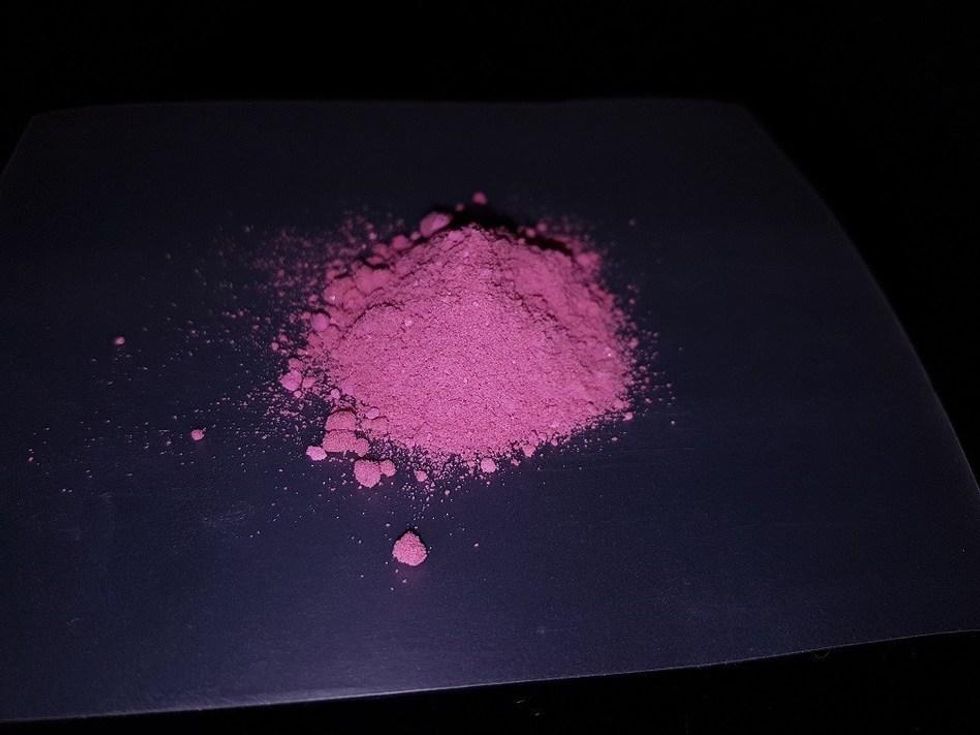
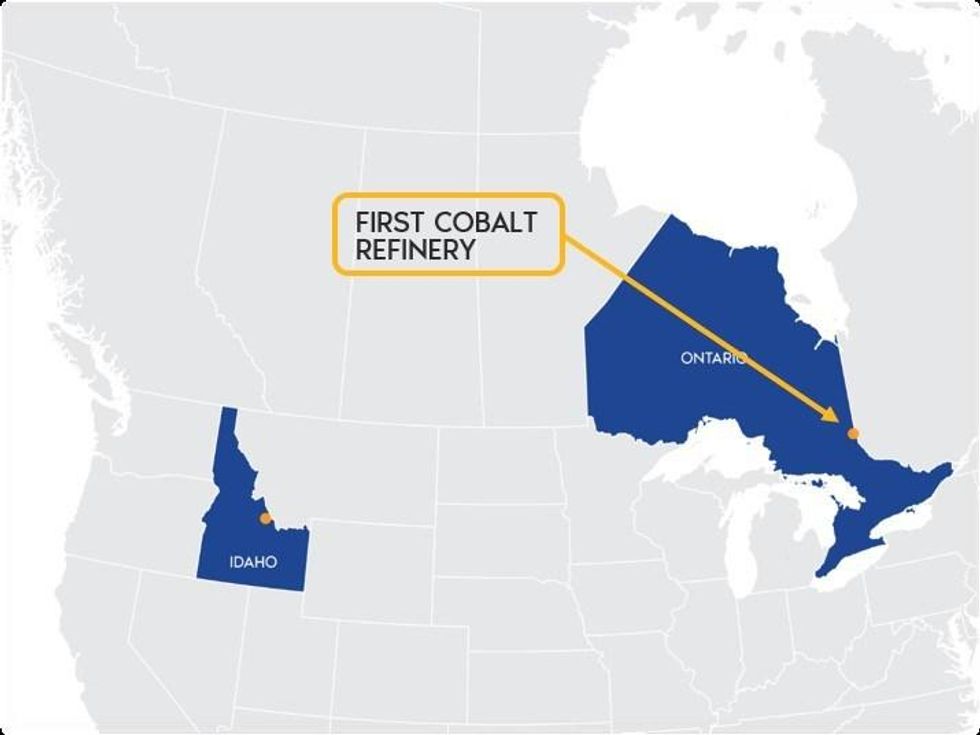
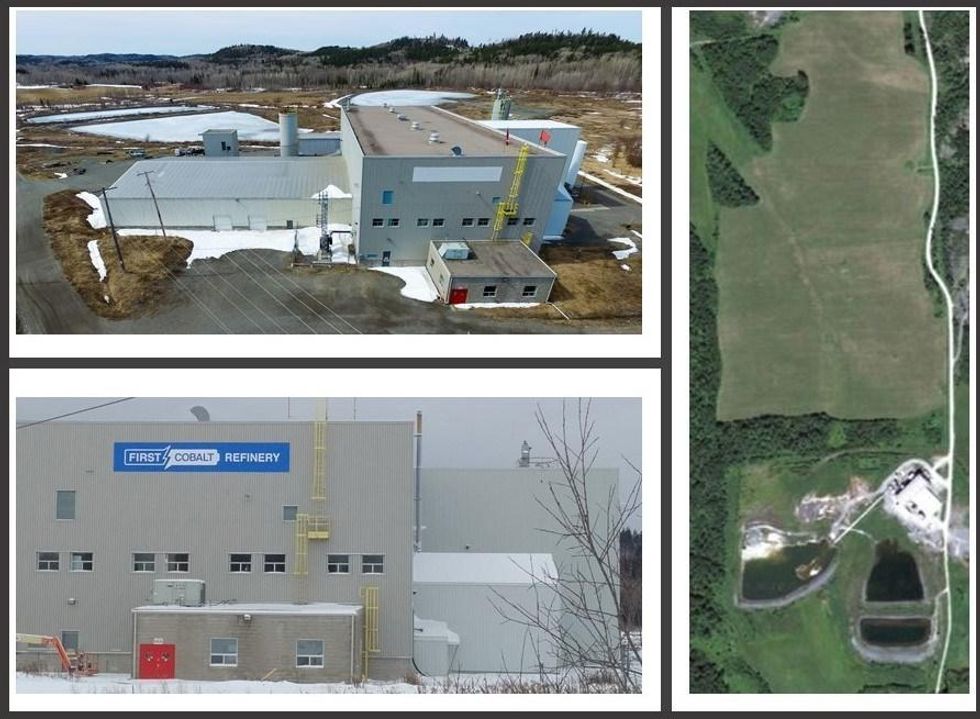
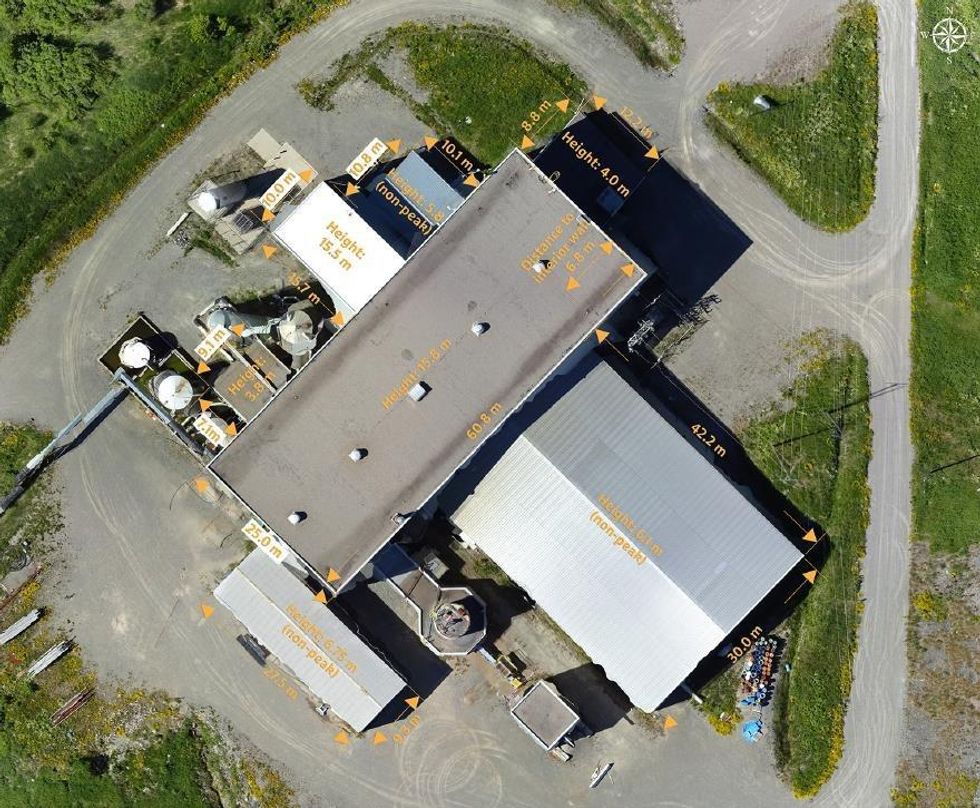

- Product assayed 20.8% cobalt, surpassing the reference grade for sulfate pricing
- Product classified as “high purity”, achieving over 99.9% purity
- Test work carried out in single batches, offering ample opportunity to improve product specifications to meet offtake partner requirements through process optimization
- Potential to produce up to 2,000 tonnes of cobalt in product per annum as the process excluded use of autoclave circuit, allowing for increase in plant throughput
- Near term cash flow potential 18-24 months from sourcing of feedstock, milestone advances these negotiations, as well as offtake discussions
Trent Mell, President & Chief Executive Officer, commented:
“Producing a battery grade cobalt sulfate is one of our most significant accomplishments as the majority of refined cobalt for the electric vehicle market is produced in Asia. With no cobalt sulfate production in North America today, First Cobalt stands to become the first such producer for the American electric vehicle market.
“For our shareholders, this development brings us closer to cash flow and will be our top priority in the year ahead. Third party studies have confirmed that the permitted facility could be recommissioned in 18-24 months. Furthermore, the cobalt hydroxide used in these tests is currently sold at approximately 60% of the prevailing cobalt price which could offer good margin opportunities based on the findings of the previously released restart study.
“We are encouraged by the interest shown in this strategic asset by cobalt miners and EV companies alike and intend to move swiftly to secure long-term feed supply and offtake contracts. We are currently exploring a number of non-dilutive financing options for the capital requirements to restart the facility. We intend to have further updates on all aspects of the project over the next quarter as we complete these discussions.”
Henrik Fisker, First Cobalt Director and Chairman and CEO of Fisker Inc., also commented:
“Electric vehicle demand in North America will keep growing as companies such as Fisker Inc. continue to introduce new, affordable EV models to the market. Automakers and battery manufacturers have a responsibility to ensure any materials we use in our batteries are sourced in an ethical way. The First Cobalt team is dedicated to ensuring projects maintain the highest standards of ethical mining practices and environmental protection. The restart of the First Cobalt Refinery is an important step towards producing battery materials in America with a clean record from mine to machine.”
The First Cobalt Refinery is the only permitted primary cobalt refinery in North America and is ideally suited to treat North American arsenic-rich mine concentrate. Given the abundance of this higher grade material in the market, the Company has been testing third party cobalt hydroxide as an alternative source of feed.
Today’s results confirm that the existing processes in the First Cobalt Refinery are indeed capable of producing a high purity, battery grade cobalt sulfate.
SGS Canada was engaged to test cobalt hydroxide using the processes in the current refinery flowsheet to assess its suitability as feedstock (see November 8, 2018 press release). Tests simulated the existing circuits to determine the ability to produce a cobalt sulfate heptahydrate (“cobalt sulfate”), a critical component of lithium-ion batteries.
The current Refinery flowsheet includes an autoclave circuit as well as a number of solvent extraction (“SX”) lines for treating various elements, followed by product precipitation and filtration stages. Test work concludes that processing cobalt hydroxide feed would not require the reactivation of the Refinery’s autoclaves, providing an opportunity for higher production potential than projected in an independent study prepared by Primero Group. The cobalt hydroxide feed tested in this program had head grades in excess of 20% cobalt. By contrast, many other sources of cobalt hydroxide have head grades approaching 30% cobalt, providing yet another opportunity for higher production.
Commissioned in 1996, the refinery is located in Ontario, Canada, a few hours north by road or rail from the US border. Once operational, the Refinery would become the only North American producer of refined cobalt for the North American EV market.
Given the strong cash flow projections derived from the Primero Group study, the Company believes that a restart of the refinery could be financed by non-equity sources of capital, limiting dilution for shareholders and generating a steady source of cash flow to fund future activities at the flagship Iron Creek Project in Idaho, USA. The Company has received significant interest from miners and automotive companies and today’s results will allow these discussions to advance to the next stage. First Cobalt’s objective is secure a long term feed purchase agreement, offtake for the sale of refined cobalt and financing for the capital requirements. It is estimated that the refinery could be operational 18-24 months from the selection of a feed source.
The Company has engaged Ausenco, a global consulting, engineering, project delivery and asset operations, management and optimization solutions firm to the minerals & metals, oil & gas and industrial sectors to work in partnership with SGS Canada on this next phase. The next step towards a potential restart of the First Cobalt Refinery will include detailed engineering to assess further refinements to the flowsheet and circuit optimizations to maximize potential output.
First Cobalt Refinery
The First Cobalt Refinery is a hydrometallurgical cobalt refinery in the Canadian Cobalt Camp, approximately 600 kilometres from the U.S. border. The First Cobalt Refinery has the potential to produce either a cobalt sulfate for the lithium-ion battery market or cobalt metal for the North American aerospace industry or other industrial and military applications.
In late 2018, the Company released the results of three independent studies undertaken to estimate capital requirements, operating costs, permit renewal timelines, potential feedstock options and offtake opportunities. At a 24 tonne per day feed rate and using the current flowsheet, the capital cost of the restart is estimated at US$25.7M(including a 30% contingency) and a permitting review concluded that a restart is possible within 18 months of selecting a feedstock.
The Company is engaged in discussions with companies specializing in the marketing and sourcing of concentrates to secure sources of ethically produced cobalt as feedstock for the First Cobalt Refinery.
A corporate video featuring the First Cobalt Refinery in Ontario, Canada is available on the Company’s website at https://www.firstcobalt.com/investors/media-gallery/videos/.
A final decision on whether to put the Refinery back into production has not been made at this time and any decision is contingent on the outcome of the foregoing studies as well as the Company’s ability to source viable feedstock.
Refinery Restart Studies
On October 10, 2018, the Company announced the results of three studies supporting a restart of the First Cobalt Refinery. Primero Group, an Australian engineering firm with an office in Montreal, Canada, was engaged to conduct a desktop study to estimate the capital and operating costs to operate the First Cobalt Refinery in its current configuration at various throughput rates, available at www.firstcobalt.com/investors/downloads-and-filings.
As part of their study, Primero estimated the replacement value of the refinery building at various throughput rates, including the existing nameplate capacity of 24 tpd and an expansion scenario at 50 tpd. Primero’s results ranged from US$53M to US$143M, inclusive of a 30% contingency (see Table 1). In both instances, replacement estimates were limited to the refinery building and did not include site level infrastructure, including roadways, power lines and the tailings management facility. The value of the permits was also excluded for purposes of this exercise.
The Company’s base case scenario would be to resume refinery operations at a rate of 24 tpd, for which Primero has estimated a capital cost of US$20M plus a US$6M contingency (see Table 2). This estimate is subject to review once the Company has selected a feedstock, which could entail minor modifications to the flowsheet.
Primero estimated annual operating costs for the Refinery based on similar projects, with amendments to match the First Cobalt Refinery flowsheet. Annual operating costs under the 24 tpd base case scenario were estimated at US$6.8Mper year (see Table 3).
The costs presented in the report are a factored estimate, designated as an FEL 1 and AACE Class 5 (order of magnitude) estimate with an indicative accuracy range of -30%/+50%, and are based on previous historical data metrics from similar projects. Costs are typically based on first principles but as feed characteristics are undecided at this time, the operating costs provided in Table 3 are indicative only.
For purposes of Primero’s baseline study, it was assumed that North American arsenic-rich feed stock would be used to produce a cobalt carbonate product. However, as First Cobalt is now considering cobalt hydroxide feed for the production of battery grade cobalt sulfate, the flowsheet would be modified to include a cobalt crystallization circuit at an additional capital cost estimate of US$2.5 million. The base case operating scenario in the Primero study and the modified operating scenario anticipated with a cobalt hydroxide feed is outlined in Table 4.
| 1 Concentrate metal content fed into the First Cobalt Refinery will vary dependent upon feed source. A range of potential production rates for each option is provided. A mass pull to concentrate of 6% has been assumed. |
| 2 The cobalt hydroxide scenario has been modelled by swapping out concentrate for hydroxide on a tonne-for-tonne basis. The company has not completed any detailed engineering studies at this time. |
The Company engaged a third party permitting and environmental consultant to review the state of current permits and timeline for a restart. The review found that the Refinery would require a new permit to take water but that all other major permits are in place. Subject to certain modifications and amendments, it is believed that an 18 to 24-month period would be sufficient to renew and amend all necessary permits to restart the refinery. An order of magnitude cost estimate for the approval process is estimated at approximately $1 million.
With respect to existing tailings capacity, it was noted that the autoclave pond has not been fully constructed and has an estimated 40,000 m3 (approximately 70,000 tonnes assuming a specific gravity of 1.74 tonnes per cubic metre) of remaining permitted capacity yet to be constructed. Operating at 24 tpd, the autoclave pond would reach capacity after eight years. Thereafter, the Company could avail itself of 80 acres to the north of the Refinery for additional tailings storage capacity. The primary settling pond is also not yet constructed to its full capacity and it was noted that doing so would improve discharge water quality through additional retention time and increased capacity for water storage.
First Cobalt also engaged a leading cobalt market research company to advise the Company on (1) indicative commercial terms for a variety of feedstock options for the refinery, and (2) potential offtake terms for cobalt products after the refining process is completed. The report identified three primary sources of potential feedstock and highlighted the high quantities of ethically-sourced cobalt hydroxide material. The study considered offtake markets for final product as the refinery could produce a cobalt sulfate for the battery market or it could produce cobalt metal for the aerospace, military and industrial sectors. Current indications are that pricing for cobalt sulfate is generally in line with cobalt metal.
Detailed Test Results – Cobalt Sulfate
The first stage of metallurgical testing was intended to determine leach characteristics of the hydroxide sample and to closely track deleterious elements. The cobalt hydroxide sample graded 23.2% Co, 3.45% Mg, 3.27% Mn, 2.4% Fe, 1.6% Cu and 1% Si, while all other deleterious elements graded significantly less than 1% each. The sample leached well, easily leaching 98% of cobalt from the cobalt hydroxide under atmospheric conditions.
The second stage of testing aimed to improve the quality of the leach liquor through the removal of deleterious elements using an impurity SX step. Work primarily focused on reducing Mn, Mg, Ca, and Zn while preserving Co.
The third stage of testing involved cobalt SX and, as expected, higher cobalt loadings were achieved at higher pH levels, with 96% of the cobalt being loaded in a single contact at pH 5.5 and achieving a concentration of ~7 g/L. The organic was then scrubbed to remove deleterious elements that were co-loaded on the organic along with the cobalt. The scrub tests successfully removed approximately 90% of the loaded Mg in a single pass.
Once scrubbed, the organic was stripped of cobalt with H2SO4 until stable, at approximately pH 2.55-2.75. Copper in the strip liquor was addressed through ion exchange using XUS 43578, an ion exchange resin, which reduced Cu in the liquor to less than 0.2 mg/L. Finally, Mn was further reduced through Caro’s acid precipitation. Mn in the liquor dropped from 136 mg/L to 3.69 mg/L effectively removing ~97% of the Mn in the very first round.
Finally, the remaining strip liquor was boiled down and cooled to allow cobalt sulfate heptahydrate crystals to form.
All tests were done as single batches providing ample room for optimization of operating parameters and process improvements as would be experienced in a continuous operation like the First Cobalt Refinery.
Qualified and Competent Person Statement
Peter Campbell, P.Eng., is the Qualified Person as defined by National Instrument 43-101 who has reviewed and approved the contents of this news release. Mr. Campbell is also a Competent Person (as defined in the JORC Code, 2012 edition) who is a practicing member of the Professional Engineers of Ontario (being a ‘Recognised Professional Organisation’ for the purposes of the ASX Listing Rules). Mr. Campbell is employed on a full-time basis as Vice President, Business Development for First Cobalt. He has sufficient experience relevant to the activity being undertaken to qualify as a Competent Person as defined in the JORC Code. The term “Competent Person” is not recognised by Canadian securities regulatory authorities, and the term is used by the Company with reference to the JORC Code, and to ensure compliance with the ASX Listing Rules and applicable reporting requirements in Australia.
About First Cobalt
First Cobalt is a Canadian-based pure-play cobalt company and owner of the only permitted primary cobalt refinery in North America. The Company is studying a restart of the First Cobalt Refinery in Ontario, Canada, which could produce 2,000 tonnes of cobalt sulfate or metallic cobalt per year. First Cobalt’s main cobalt project is the Iron Creek Cobalt Project in Idaho, USA, which has Inferred mineral resources of 26.9 million tonnes grading 0.11% cobalt equivalent, or an alternative underground-only scenario of 4.4 million tonnes grading 0.3% cobalt equivalent.
On behalf of First Cobalt Corp.
Trent Mell
President & Chief Executive Officer
Neither TSX Venture Exchange nor its Regulation Services Provider (as that term is defined in policies of the TSX Venture Exchange) accepts responsibility for the adequacy or accuracy of this release.
Cautionary Note Regarding Estimates of Resources
Readers are cautioned that mineral resources are not economic mineral reserves and that the economic viability of resources that are not mineral reserves has not been demonstrated. The estimate of mineral resources may be materially affected by geology, environmental, permitting, legal, title, socio-political, marketing or other relevant issues. The mineral resource estimate is classified in accordance with the Canadian Institute of Mining, Metallurgy and Petroleum’s “2014 CIM Definition Standards on Mineral Resources and Mineral Reserves” incorporated by reference into NI 43-101. Under Canadian rules, estimates of inferred mineral resources may not form the basis of feasibility or pre-feasibility studies or economic studies except for Preliminary Economic Assessment as defined under NI 43-101. Readers are cautioned not to assume that further work on the stated resources will lead to mineral reserves that can be mined economically. An Inferred Mineral Resource as defined by the CIM Standing Committee is “that part of a Mineral Resource for which quantity and grade or quality are estimated on the basis of limited geological evidence and sampling. Geological evidence is sufficient to imply but not verify geological and grade or quality continuity. An Inferred Mineral Resource has a lower level of confidence than that applying to an Indicated Mineral Resource and must not be converted to a Mineral Reserve. It is reasonably expected that the majority of Inferred Mineral Resources could be upgraded to Indicated Mineral Resources with continued exploration.”
Cautionary Note Regarding Forward-Looking Statements
This news release may contain forward-looking statements and forward-looking information (together, “forward-looking statements”) within the meaning of applicable securities laws and the United States Private Securities Litigation Reform Act of 1995. All statements, other than statements of historical facts, are forward-looking statements. Generally, forward-looking statements can be identified by the use of terminology such as “plans”, “expects’, “estimates”, “intends”, “anticipates”, “believes” or variations of such words, or statements that certain actions, events or results “may”, “could”, “would”, “might”, “occur” or “be achieved”. Forward-looking statements involve risks, uncertainties and other factors that could cause actual results, performance and opportunities to differ materially from those implied by such forward-looking statements. Factors that could cause actual results to differ materially from these forward-looking statements are set forth in the management discussion and analysis and other disclosures of risk factors for First Cobalt, filed on SEDAR at www.sedar.com. Although First Cobalt believes that the information and assumptions used in preparing the forward-looking statements are reasonable, undue reliance should not be placed on these statements, which only apply as of the date of this news release, and no assurance can be given that such events will occur in the disclosed times frames or at all. Except where required by applicable law, First Cobalt disclaims any intention or obligation to update or revise any forward-looking statement, whether as a result of new information, future events or otherwise.
Source: www.newswire.ca
